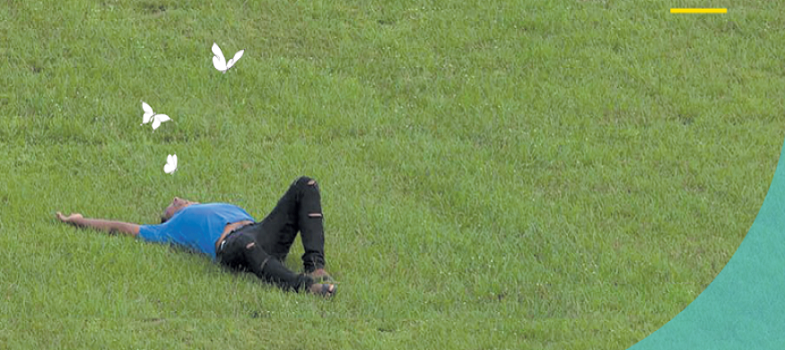Evaluation using the 6 P's
Read the following page as an example for how the 6 P's can be applied. In this case, Helena Ann Mitchell answered the 6 P's for the Refuge community.
If you haven't completed a project before, try to think of either your own community or a community you are likely to work with in the future and try to answer the 6 P's. Record your experiences of working through the 6 P’s in your learning journal. Which of the P’s was hardest for you to answer and why?
Stakeholders were briefed about the study at initial meetings in Guyana then discussed what to expect when the researcher met with the women in their refuge setting. Stakeholders involved in the selection of the sample were women living in the refuge and those who had left to reside in their respective communities. Stakeholders were present at some of the participatory sessions. Philosophy and standards were set by stakeholders responsible for the care of the women in the refuge and shared with research team prior to meeting with participants. Accommodation was provided for the sessions.
Challenges for researchers to consider - women on many occasions return to abusive partners after a short period of respite. Sessions were limited to a specific period during the data collection field trip. Re-entering their communities can prove to be problematic for the women due to having no fixed abode or inappropriate living conditions, being neglected and spurned by families and limited work prospects to earn a living. Researchers were fully aware of these issues prior to engagement with the community.
2. Politics: understanding the local social and political contexts in which the research would be carried out.
Violence and aggression against women have been identified as a serious problem in Guyana. Statistics in relation to abuse of women are not gathered nationally so is difficult to know the full extent of the problem. The local contexts have been identified as supportive services for women who have been abused. Women and their children seek help in a covert refuge in a rural area of Guyana. Managers and counsellors are available to help the women to cope and manage their lives as a result of gender based violence.
3. People: identifying the people that will be involved or affected by the work: the researchers, the community partners with whom we engaged and any other participants that may be affected.
The participants, managers, counsellors, researchers were fully involved. Other women living in the refuge who were not directly involved in the sessions assisted in preparation of the room. It was important to include them as they were members of that community and were interested in the study. The refuge is a part of the crisis centre so other stake holders from the centre were indirectly involved. Empowering women in the group and giving them a voice were perceived as a positive step by counsellors and discussed adopting similar practices in doing more group work in the refuge and the crisis centre when the study had ended.
4. Purposes: clarifying the aims and objectives of the research from the perspective of ARCLIGHT, the participants involved and other stakeholders.
Aims and objectives of the research were shared with stakeholders who briefed the participants. The focus was on community mental health resilience using PAR methodology. Certain restrictions associated with social media were highlighted before data collected as women had left abusive partners and were being protected.
5. Processes: pinning down the approach and the methods of data collection & techniques of analysis used to evaluate impacts.
Stakeholders involved from the outset and participated actively with participants. Participatory groups used as data collection tool and sessions taped. The transcripts will be analysed using a thematic approach. Inspirational stories, pictures, drawings, 40 flip chart sheets entries were produced as women shared their experiences with each other, researcher, project manager and the counsellors. Themes from these entries were discussed with the participants as they identified the key points arising from the many discussions during the 11 sessions. The final session was evaluated by one of the counsellors. In this context MAZIzone was discussed but participants preferred to talk and share feelings, hopes and aspirations using flip chart sheets and other mechanisms. All the resources co-produced by the women will be uploaded on the MAZIzone so that they can be shared with other women admitted to the refuge. Further data will be collected during the next field visit.
6. Performances: considering what was found and the extent to which this met the objectives of the research.
Several outputs/resources were generated from the women as they shared experiences of being mentally resilient which will be uploaded on the MAZI. Women produced resilience tool boxes to keep and to refer to when they felt low or depressed. Described the type of community they lived in temporarily and what they expected in terms of a mentally resilient one. They found the refuge supportive but had their own expectations of what their wider communities should provide for them. They felt inspired in the sessions as they learnt about the meaning of resilience, community resilience and of being healthy. Mental health was likened to a continuum with good mental health at one end and poor mental health at the other. They oscillated along that continuum depending on their personal circumstances. The crisis centre has agreed to provide a specific room decorated by the participants for them and future women who have left the refuge to meet on a regular basis to support each other. Further discussions are taking place to capture the thoughts of the managers and counsellors at the refuge about community mental health resilience. The refuge is being seen as a community within this context.
